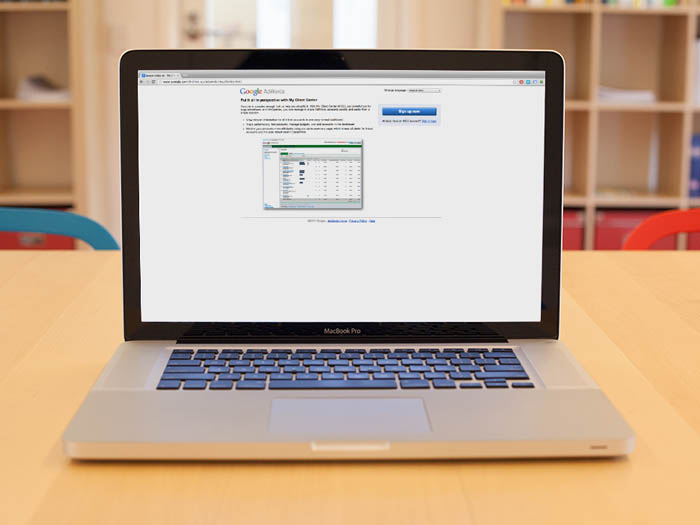Boost Your Business with Effective Google Ads
Loves Data
Harnessing the power of Google Ads can transform your business. Whether you're aiming to drive more traffic, increase sales, or build brand awareness, Google Ads offers a versatile platform to meet your marketing goals. With billions of searches conducted daily, Google Ads places your business where your potential customers are looking.
In this blog, we’ll explore how to set up campaigns, target audiences, craft compelling ads, and measure success. By mastering these essentials, you can drive targeted traffic to your site, convert more visitors into customers, and ultimately boost your business’s growth. Ready to get started? Let's dive in!
1. Setting Up Your Google Ads Campaign
Setting up a Google Ads campaign is your first step toward driving targeted traffic to your site. It begins with selecting the right campaign type. Google Ads offers several types, including Search Network, Display Network, and Video campaigns. Each serves different objectives, so choose the one that aligns with your goals.
Steps to Set Up:
- Choose Your Campaign Type: For instance, Search Network campaigns are ideal for driving leads because they display your ads to users actively searching for keywords you target.
- Set Your Budget and Bids: Determine a daily budget based on how much you’re willing to spend. For example, if you have a $500 monthly budget, consider allocating approximately $16 per day to ensure consistent visibility. Google's automated bidding strategies can help you make the most of your budget by optimizing for clicks or conversions.
- Select Your Keywords: Use Google’s Keyword Planner to find relevant keywords. Select keywords with a high search volume but low competition to strike a balance between reach and cost.
Key Considerations:
- Assets: Utilize assets like sitelinks, callouts, and structured snippets to add more information to your ads. These can improve your ad’s visibility and click-through rate.
- Landing Page Optimization: Ensure your landing page aligns with the ad’s content. A consistent message from ad to landing page improves user experience and increases the likelihood of conversions.
- Tracking and Analytics: Set up conversion tracking to measure the actions users take after clicking your ad. These insights help you refine your campaign for better performance.
By carefully setting up your campaign, you lay the groundwork for a successful Google Ads strategy. This ensures your ads reach the right users and efficiently use your budget.
2. Targeting the Right Audience
Reaching the right audience is the cornerstone of a successful Google Ads campaign. By tailoring your ads to users who are actively searching for or interested in your products, you increase conversion rates and maximize your return on investment.
Techniques for Advanced Targeting:
- Demographic Targeting: Use demographic filters like age, gender, and household income to narrow down your audience. This helps ensure your ads are seen by those most likely to convert.
- Geographic Targeting: Focus on geographic locations where your potential customers are located. For local businesses, targeting specific cities or even postal codes can be very effective.
- Device Targeting: Optimize your ads for different devices. You can create custom bids for mobile, desktop, and tablet users based on what works best for your campaign.
Audiences and Segments:
- Custom Segments: Create custom segments based on user behavior and interests you've identified through analytics. This helps you reach a more tailored group of potential customers.
- Remarketing: Use remarketing lists to target users who have already interacted with your site. These users are more likely to convert since they’ve already shown interest.
- Affinity Audiences: Reach users based on their lifestyles, passions, and habits. Affinity audiences allow you to connect with people who have demonstrated a qualified passion in areas related to your products or services.
Practical Application:
- Ad Scheduling: Run your ads at times when your target audience is most active. Analyze your data to determine the best days and times to display your ads.
- Negative Keywords: Use negative keywords to exclude irrelevant traffic. This ensures you’re not paying for clicks from users who are unlikely to convert.
By using these targeting techniques, you ensure that your Google Ads are seen by the most relevant audience. This increases the chances of conversions and optimizes your ad spend.
3. Crafting Compelling Ad Copy and Design
Crafting the right ad copy and design can make or break your campaign. Your ads need to be engaging and clear, convincing users to click through to your site.
Tips for Effective Ad Copy:
- Use Clear and Concise Language: Get to the point quickly. Use short, impactful sentences that convey your message with minimal words.
- Highlight Benefits: Focus on what your product or service can do for the user. Highlight benefits over features to connect with what matters most to your audience.
- Include a Strong Call-to-Action (CTA): Tell users exactly what you want them to do next, whether it's "Buy Now," "Learn More," or "Sign Up Today."
Ad Design Elements:
- Visual Appeal: Use high-quality images or graphics. Your visuals should be eye-catching but also relevant to your product or service.
- Consistency: Ensure your ad's design matches the look and feel of your website. Consistency builds trust and reinforces your brand message.
- Responsive Design: Ensure your ads look good on all devices. Mobile users should have just as good an experience as desktop users.
Ad Types and Assets:
- Text Ads: Perfect for search campaigns. Make sure you utilize all available space to provide information and a compelling CTA.
- Responsive Ads: Adjust automatically to fit any ad space, giving you more flexibility. Provide multiple headlines and images for the best results.
- Extensions: Use extensions to add extra information, like phone numbers, links to specific pages, or additional offers. These can improve your ad’s visibility and effectiveness.
By focusing on compelling ad copy and engaging design, you can create ads that catch the eye and encourage users to take action. A well-crafted ad can significantly improve your campaign's performance.
4. Optimizing and Measuring Your Campaign Performance
Optimizing and measuring your Google Ads campaign performance is crucial for continuous improvement. Regularly reviewing your metrics allows you to make data-driven decisions that refine your strategy and enhance results.
Key Performance Indicators (KPIs):
- Click-Through Rate (CTR): Measures how often people click your ad after seeing it. A high CTR indicates your ad is relevant to users.
- Conversion Rate: Shows how many clicks lead to desired actions, such as purchases or sign-ups. Monitor this closely to gauge ad effectiveness.
- Quality Score: Google assigns a Quality Score to your ads based on relevance, CTR, and landing page experience. Higher scores result in better ad placements and lower costs.
Optimization Techniques:
- A/B Testing: Experiment with different ad copies, designs, and CTAs to see which performs best. Use insights to improve future ads.
- Budget Allocation: Shift budget toward high-performing campaigns or keywords. Pause underperforming elements to optimize ad spend.
- Adjusting Bids: Regularly evaluate and adjust bids to maintain competitiveness without overspending. Use bid modifiers for devices, locations, or times.
Using Analytics:
- Google Analytics Integration: Connect your Google Ads account to Google Analytics for deeper insights into user behavior and campaign performance.
- Attribution Models: Explore different attribution models to understand the customer journey and assign credit accurately for conversions.
By continuously analyzing and optimizing your campaigns, you can achieve consistent growth and better results from your Google Ads efforts.
Conclusion
Mastering Google Ads is an invaluable skill for growing your business. By setting up effective campaigns, targeting the right audience, crafting engaging ads, and optimizing performance, you can drive traffic, increase conversions, and achieve your marketing goals. Start implementing these strategies today and watch your business thrive!
Ready to elevate your marketing game? Explore our comprehensive Google Ads courses at Loves Data to master Google Ads and other powerful tools. Join us today and transform how you connect with your prospects and customers!




Comments